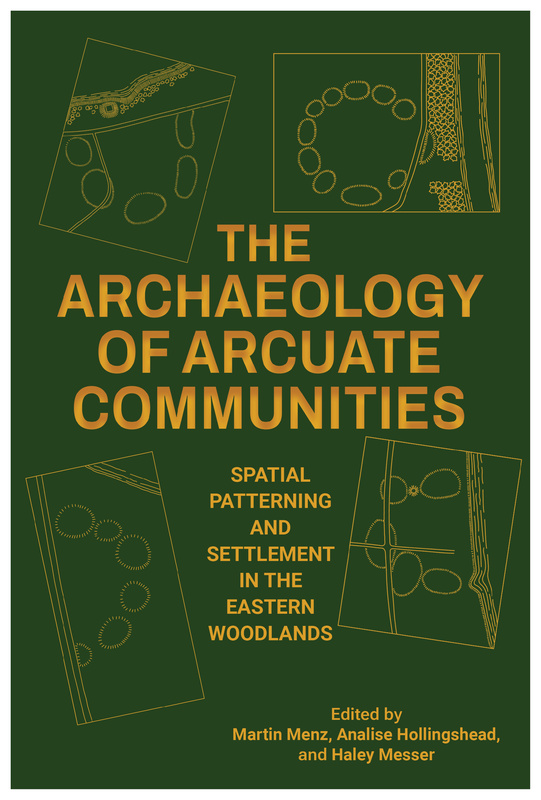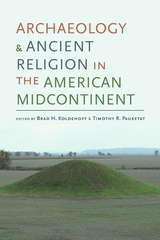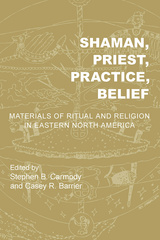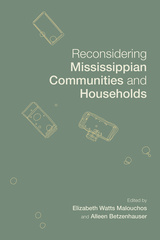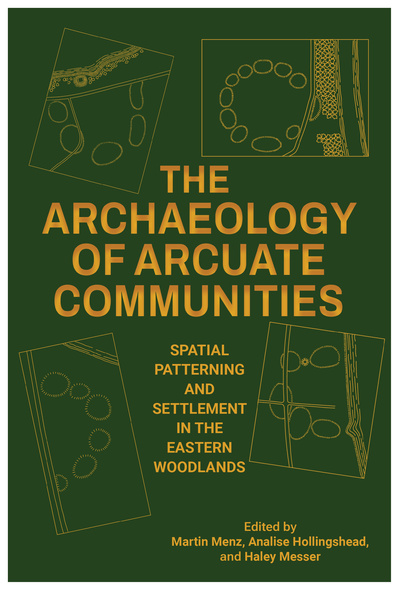
290 pages, 6 x 9
34 B&W FIGURES 11 MAPS - 5 TABLES
Hardcover
Release Date:03 Jun 2024
ISBN:9780817321970
The Archaeology of Arcuate Communities
Spatial Patterning and Settlement in the Eastern Woodlands
University of Alabama Press
The Archaeology of Arcuate Communities is an edited collection of ten essays that illuminate how Indigenous communities of the Eastern Woodlands, from 10,000 BC to the 1550s, are analyzed and interpreted by archaeologists today. Volume editors Martin Menz, Analise Hollingshead, and Haley Messer define the persistent circular or “arcuate” pattern of Native settlements in this region as a spatial manifestation of community activities that reinforced group identity alongside plazas, mounds, and other architectural features.
The varied case studies in this volume focus on specific communities, how they evolved, and the types of archaeological data that have been used to assess them. Part I, “Defining the Domestic Unit in Arcuate Communities,” reveals social distinctions between households and household clusters in arcuate communities, how they differ in terms of stylistic patterns and exchange, and how they combined to form distinct social groups at different scales within a broader community. Part II, “Organizing Principles of Arcuate Communities,” broadens the scope to identify the organizing principles of entire arcuate communities, such as the central role of plazas in structuring their development, how the distribution of households and central features within communities was contested and reorganized, and the importance of mounds in both delineating arcuate communities and marking their position on the landscape. Part III, “Comparison and Change in Arcuate Communities,” comprises case studies that examine changes in the organization of arcuate communities over time. Rounding out the volume is a concluding chapter that assesses how and why communities around the world formed in circular patterns.
A valuable resource for archaeologists, this collection will also be of interest to those seeking to learn about Native North American settlement, ceremony, and community organization.
The varied case studies in this volume focus on specific communities, how they evolved, and the types of archaeological data that have been used to assess them. Part I, “Defining the Domestic Unit in Arcuate Communities,” reveals social distinctions between households and household clusters in arcuate communities, how they differ in terms of stylistic patterns and exchange, and how they combined to form distinct social groups at different scales within a broader community. Part II, “Organizing Principles of Arcuate Communities,” broadens the scope to identify the organizing principles of entire arcuate communities, such as the central role of plazas in structuring their development, how the distribution of households and central features within communities was contested and reorganized, and the importance of mounds in both delineating arcuate communities and marking their position on the landscape. Part III, “Comparison and Change in Arcuate Communities,” comprises case studies that examine changes in the organization of arcuate communities over time. Rounding out the volume is a concluding chapter that assesses how and why communities around the world formed in circular patterns.
A valuable resource for archaeologists, this collection will also be of interest to those seeking to learn about Native North American settlement, ceremony, and community organization.
Archaeology of Arcuate Communitities is a timely and insightful volume with a focused and comprehensive collection of chapters. . . Each chapter stands alone, yet taken as a group form a conversation about community making and archaeology.’
—Ramie Gougeon, coeditor of Archaeological Perspectives of the Southern Appalachians: A Multiscalar Approach
The deep history and pervasiveness of social life in the round invite speculation over its transhistorical and intercultural qualities. And yet, as contributors of this volume share through rich examples, this common spatial disposition belies marked social variations among ancient communities of the Eastern Woodlands. These compelling cases give renewed purpose to an archaeology of arcuate living.’
—Kenneth E. Sassaman, Hyatt and Cici Brown Professor of Florida Archaeology, University of Florida
This volume is an important steppingstone in our understanding of the relationship between villages and communities in Indigenous eastern North America. The chapters within will be valuable to anyone studying settlements, as the authors seek to build new ideas from the ground up using a wide array of multiscalar evidence.’
—Eric E. Jones, associate professor of archaeology in the Department of Anthropology at the University of Colorado Boulder
‘The Archaeology of Arcuate Communities offers an unparalleled review of how southeastern Indigenous peoples organized their villages and towns for thousands of years and how these organizational principals provide critical insights into the political, social, and cultural worlds of these communities.’
—Matthew C. Sanger, Curator of North American Archaeology at the National Museum of American Indian
Martin Menz is a PhD candidate in anthropology at the University of Michigan.
Annalise Hollingshead is a cultural resource management archaeologist with SWCA Environmental Consultants, San Antonio, Texas.
Haley Messer is an archaeologist with the US Fish and Wildlife Service.
CONTRIBUTORS
Aaron R. Comstock / Robert A. Cook / Steven L. De Vore / William Green / Analise Hollingshead / Megan C. Kassabaum / Bernard K. Means / Jayur Mehta / Martin Menz / Haley Messer / John W. O’Hear / Thomas J. Pluckhahn / Michael Russo / Marcus A. Schulenburg / Jeffrey Shanks / Tara Skipton / Karen Y. Smith / Frankie Snow / Keith Stephenson / Vincas P. Steponaitis / Neill J. Wallis / Shaun E. West / Adam S. Wiewel
Annalise Hollingshead is a cultural resource management archaeologist with SWCA Environmental Consultants, San Antonio, Texas.
Haley Messer is an archaeologist with the US Fish and Wildlife Service.
CONTRIBUTORS
Aaron R. Comstock / Robert A. Cook / Steven L. De Vore / William Green / Analise Hollingshead / Megan C. Kassabaum / Bernard K. Means / Jayur Mehta / Martin Menz / Haley Messer / John W. O’Hear / Thomas J. Pluckhahn / Michael Russo / Marcus A. Schulenburg / Jeffrey Shanks / Tara Skipton / Karen Y. Smith / Frankie Snow / Keith Stephenson / Vincas P. Steponaitis / Neill J. Wallis / Shaun E. West / Adam S. Wiewel

